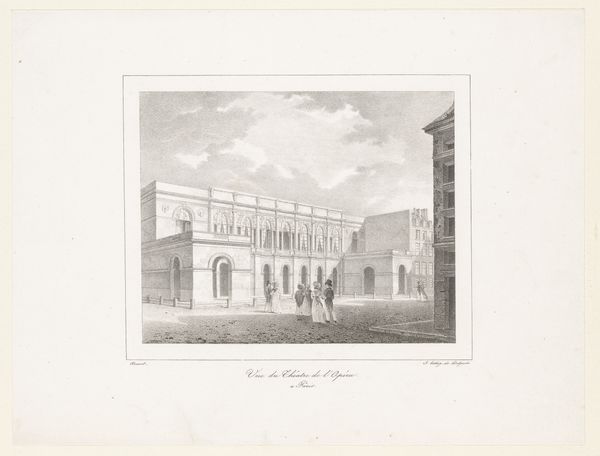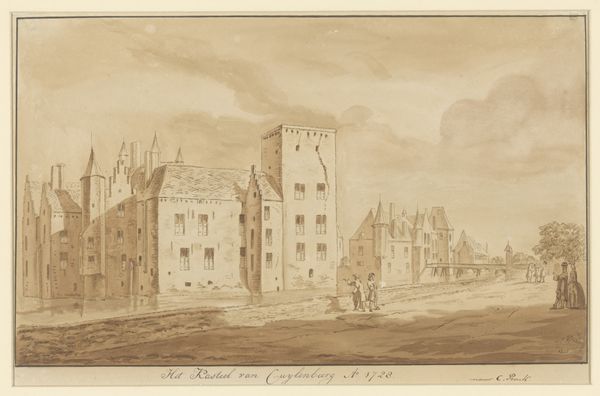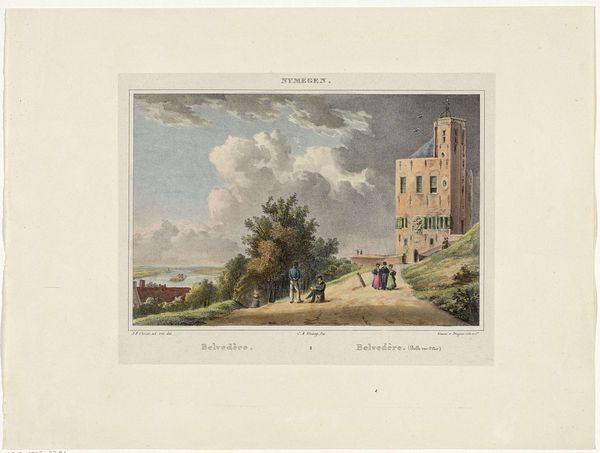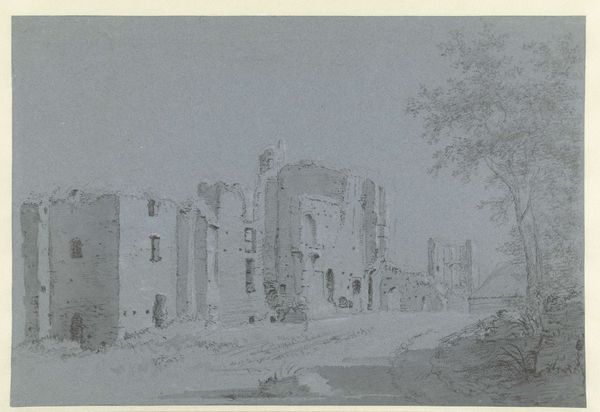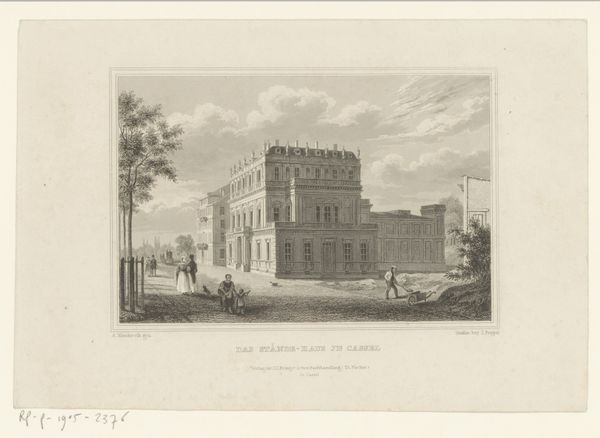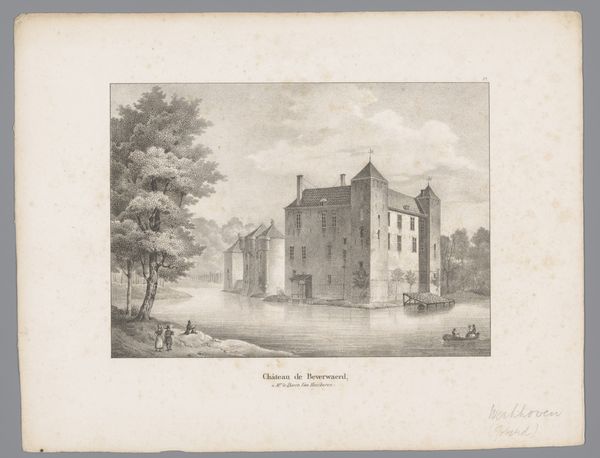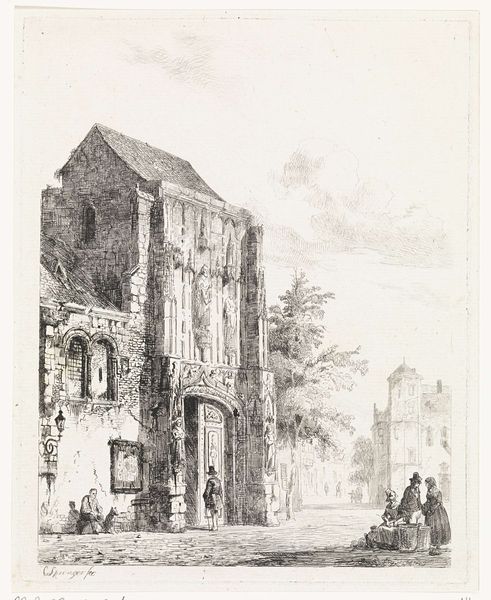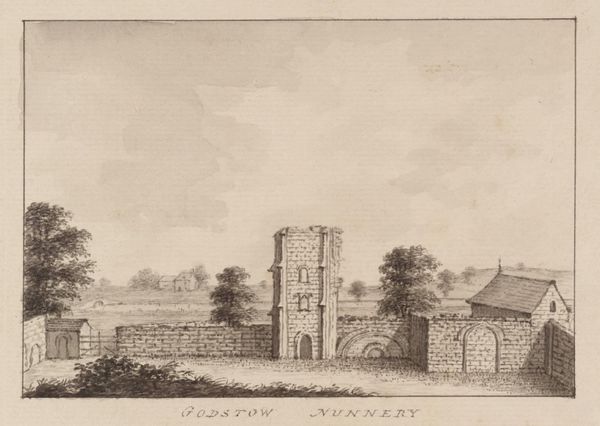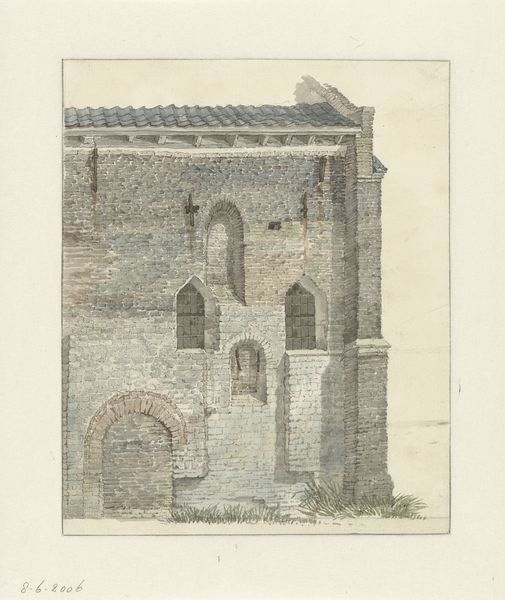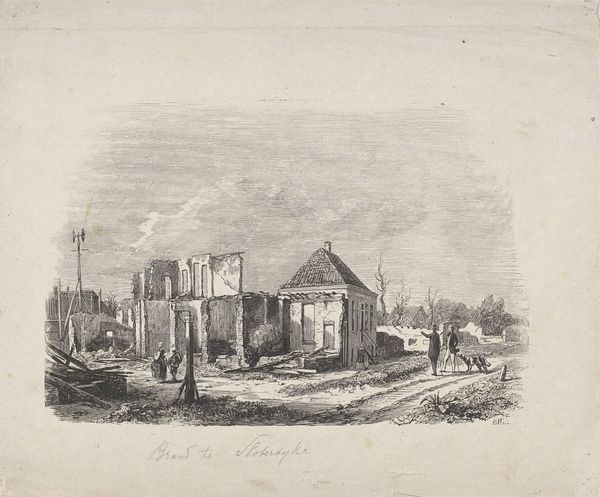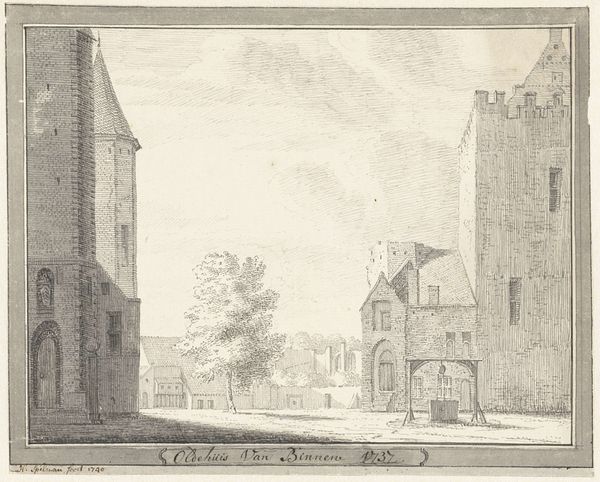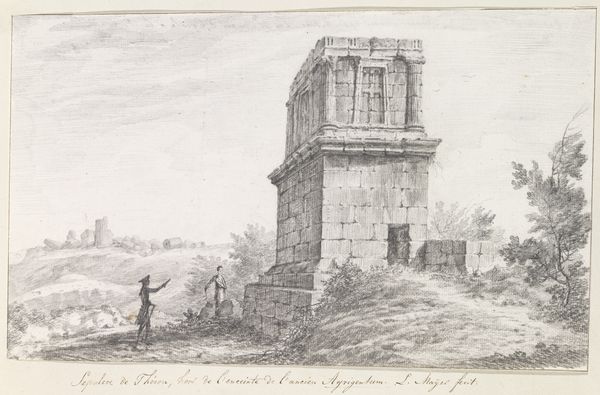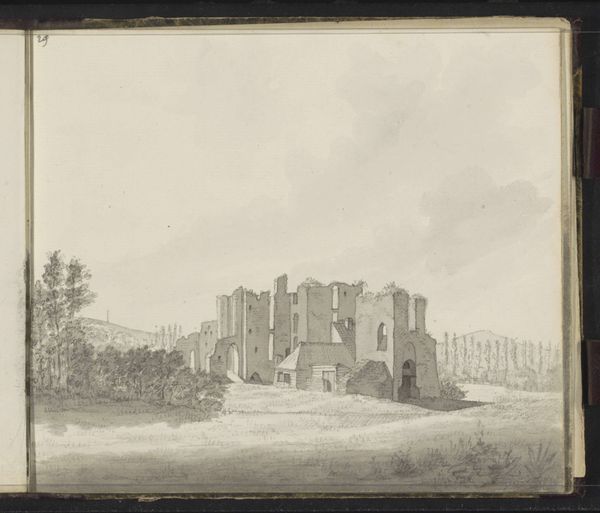
painting, watercolor
#
neoclacissism
#
painting
#
landscape
#
watercolor
#
cityscape
#
watercolor
Dimensions: height 327 mm, width 464 mm
Copyright: Rijks Museum: Open Domain
Curator: Louis Ducros's 1778 watercolor, "Buitenmuur van oude theater van Catanië," captures the weathered facade of an ancient theater. Editor: The way light washes over the stonework… It’s melancholic, isn't it? Like a half-remembered dream fading at the edges. Curator: Fading… yes. Ducros was part of the Neoclassical movement, which found beauty and significance in classical forms. Here, though, he presents not pristine grandeur but its decay. What material stories does the art suggest to you? Editor: Look closely at the variation in stonework, in the rough patching and unevenness. These aren't perfect classical forms, these are layered repairs – visible traces of the many hands that maintained or modified this structure. Even the application of watercolor: was this choice of medium used in the mass-reproduction of prints? What kind of labor went into this and how might that connect to those viewing them as leisurely, educational souvenirs of their travels? Curator: It's fascinating to consider the print market... this particular watercolor suggests a more emotional, personalized experience. The way he depicts the figures around the ruins–they’re not mere props. I find this more than just a recording of architectural details, no? There is mood at play. Editor: Agreed! He renders labor incidental to the architectural ruins... I guess my point is to suggest the economic infrastructure is erased as such travel mementos become "art," when actually it depends on very specific conditions. But how is "mood at play," how do you sense it? Curator: It's in the details – that splash of subtle color highlighting human interaction, the shadows that give weight and depth to the space, creating an aura of reverie... it encourages contemplation of history and human touch. The decay itself becomes beautiful, an echo of human stories embedded in stone. Editor: And to add, these weren't "still-lifes" --these classical ruins would continue to undergo a multitude of material interventions long after Ducros captures them. Fascinating that art preserves what history continues to disrupt, isn't it?
Comments
No comments
Be the first to comment and join the conversation on the ultimate creative platform.
